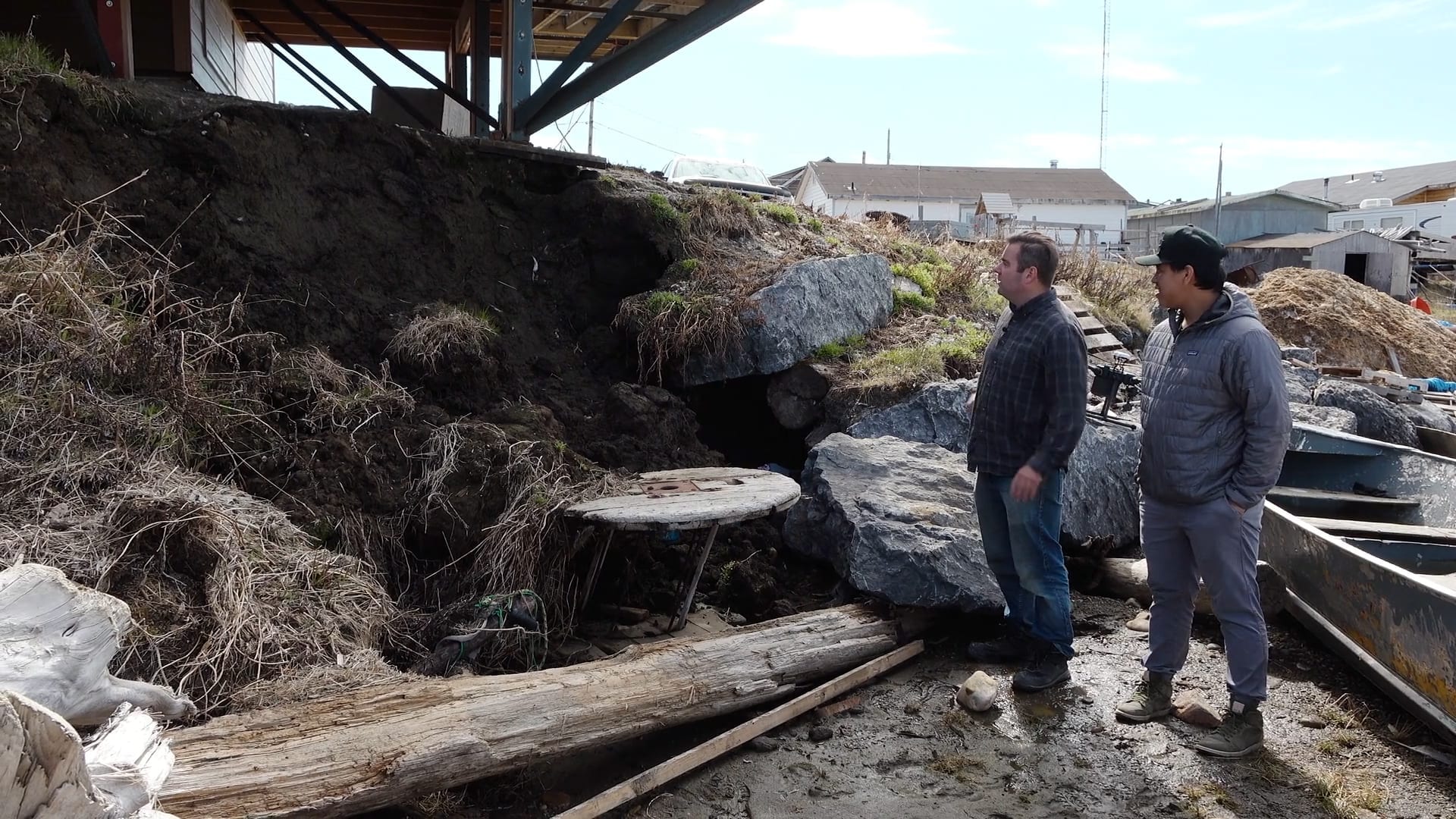
Landfast ice, where coastal sea ice freezes to the shore, melted at the fastest rate ever recorded in 2019 and an entire month sooner than in 2017.
Research conducted by Dustin Whalen through Natural Resources Canada has shown the ice began melting June 8 this last year, which was one week earlier than in 2018 and a month ahead of the average.
"Even traditional knowledge tells us that things are changing faster than anyone can remember — ever," said Whalen. "Just in a year alone, you're seeing a three-week difference. All of a sudden, the ocean is open to waves and erosion for another month of the summer.
"The impacts not just to the coast, but to the marine mammals and fish are pretty significant."
This has serious implications for the northern coastline and people who live on it. Landfast ice effectively acts as a barrier between the ocean and the coastline. During the summer months when the ice is not present, waves crash into the exposed soil.
Longer exposure time can lead to greater erosion and areas of the Beaufort coast are disappearing at rates up to 40 metres a year in some areas.
Compounding the issue is more open water is subject to the effects of wind, creating more, larger waves and even increasing the potential for more storms.
"We definitely saw increased waves and storms. Typically July is a calmer summer month, typically where we see harvesting of whales and fishing. But this July, the open ocean had three weeks to create storms," he said. "So when the harvesting came in July, hunters, marine mammals and fish were faced with pretty severe conditions.
"In 2018, when they were harvesting on Hendrickson Island, a big storm came in and pushed ice up from off-shore all around their camp."
Open water also is far darker than bright ice, which over the course of a summer leads to greater absorption of sunlight. This could further accelerate the process.
However, Whalen noted the two phenomenons might not be directly affecting each other.
"That's further off-shore. I don't think that's the reason the landfast ice broke up as soon as it did, the reason for that is the winter season we had last year," he said. "It was pretty warm throughout the entire Mackenzie basin. There wasn't tons of snow accumulation and the ice was not as thick as it usually it.
"So there was less ice to break up and it moved much quicker. When that warmer river water reached the ocean, even the landfast ice there wasn't as thick, strong and wide as it usually is. So it was easy for it to break up early."
Though there are many, many factors at work, landfast ice melting faster corresponds to similar findings from other angles. In September, the National Snow and Ice Data Center announced summer sea ice was at its second lowest extent since satellites began keeping track in 1979 — 2012 was the lowest extent.
Whalen said with more thawing events being observed, more erosion would be sure to follow.
"The ice is the driver of all things. As soon as the ice went, it allows the sea to come in, which spring-boards everything else," he said. "In terms of ocean temperature, this year was warmer than last year.
"This year we observed a lot more thawing than last year, so you can say there was more erosion this year, because of the early ice break up and warmer summer temperatures."
